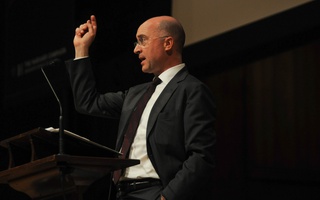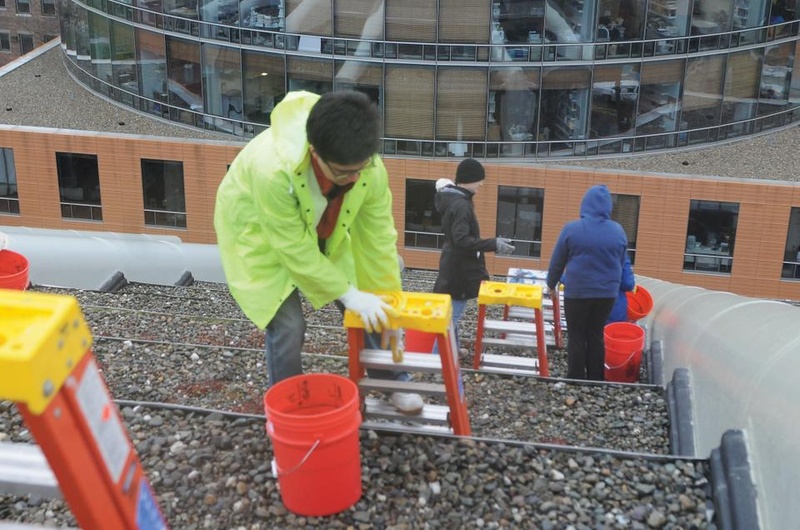The Harvard Graduate School of Design removed 3,750 pounds of gravel from the roof of Gund Hall and replaced it with different amounts of organic substrate on Friday afternoon to test different cost-effective methods of green roof retrofitting.
The installation of five additional plots marks the third round of testing led by Christian Werthmann, a professor of landscape architecture at the School of Design who has been looking to create a cost-effective green roof since 2006.
To make a green roof, Werthmann and his team used different amounts of Rooflite—a mineral aggregate with a small amount of organic material that is commonly used in green roof projects—in addition to planting seeds and clippings of sedum, a low flowering plant that tolerates the harsh roof conditions well.
The team has tried other soil and plant types in the past experiments.
If the School of Design successfully installs a green roof, Werthmann said that the plants will be able to absorb excess storm water as well as reduce the amount of sunlight directly hitting Gund Hall.
“This roof tries to be a good citizen,” Werthmann said.
The test plots the team has examined thus far have not yielded strong results and thus do not have the potential to increase the building’s energy efficiency, Werthmann said.
Additionally, Werthmann added that the area of the roof covering the building’s studio space has a very low weight limit that may not support the amount of substrate needed to grow plants.
Werthmann has only been able to place two inches of substrate on the roof of Gund Hall—most green roofs require at least four—and only 10 to 20 percent of test areas have sprouted plants.
For an effective green roof, plants should cover about 70 to 100 percent of the area, Werthmann said.
The team will periodically add fertilizer and measure plant coverage throughout the summer to assess the success of the new test plots, said Julia K. Africa, Werthmann’s research assistant.
“We use this roof as really a test roof—it’s not a commercial product,” Werthmann said.
Werthmann added that he hopes to create a cost-effective model for installing green roofs, as the high costs of the new green technologies often deters companies and other institutions from retrofitting old buildings.
“We go from the deluxe version to the really poor man’s version,” Werthmann said.
Christoph F. Reinhart, a professor at the School of Design, said that creating a green roof at Gund Hall may not save the school as much energy as other green projects, such as new insulation for the building.
“It’s an interesting technology,” Reinhart said. “But I’m not really convinced that it’s practical.”
—Staff writer Stephanie B. Garlock can be reached at sgarlock@college.harvard.edu.
Read more in News
Flaherty Backs Out Of State Senate PrimaryRecommended Articles
-
 Even When the Sky Is Falling Down (In Your Room)
Even When the Sky Is Falling Down (In Your Room) -
Making NoiseI. Two Images
-
Sound Installation for Cultural TunesThose walking by the Carpenter Center Thursday afternoon might have heard what sounded like oriental tunes coming from the roof of the building.
-
Contract Employee Injured after Fall from Science Center RoofAround 11:30 a.m. on Thursday, a contract employee for Harvard Energy and Utilities Services fell from a water cooling tower while working on the roof of the Science Center.
-
 Design School Seeks $110M in Campaign
Design School Seeks $110M in Campaign














